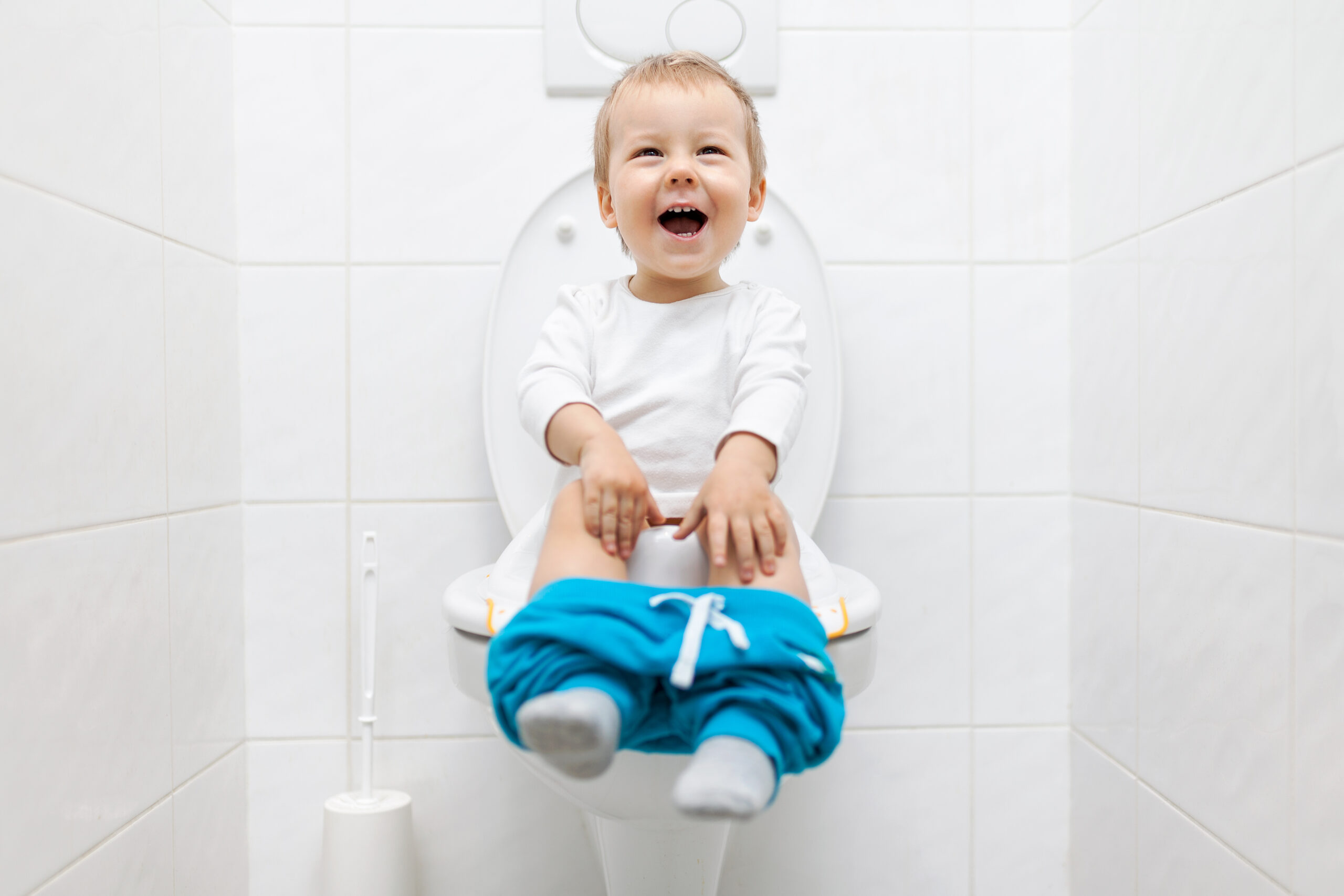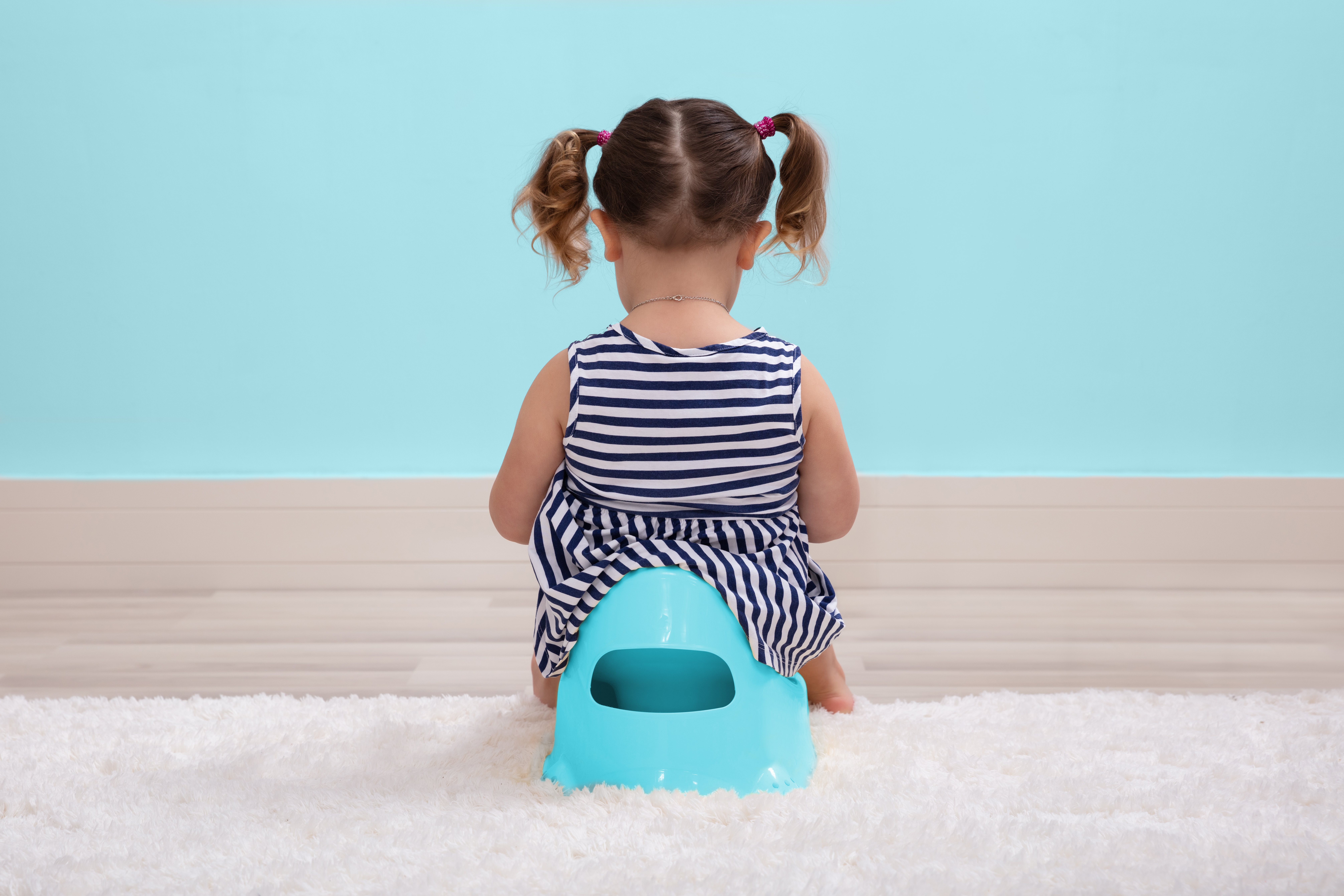
Using the potty is a developmental milestone that can create real anxiety in parents. You may worry about “pushing” your child while at the same time worrying about not helping your child through this important step.
Readiness
- Most children are ready to withhold a bowel movement and urine by the time they are 15 months old; even earlier. This is often a suprise to parents.
- Many parents wait for their child to show that they are “ready.” Sometimes this works, but sometimes the parent is still waiting when the child is 3, and even 4, years old.
- Parents take their child’s refusal to sit on the potty or wear underwear as a sign that they are not ready. However, all children are in an internal tug of war between wanting to remain a baby and wanting to be more grown up. When a child says NO you are hearing the baby talking. It is the parent’s job to help the big kid by setting clear expectations.
- For most families, the readiness is actually more about the parent’s willingness than the child’s ability to master the job.

First Steps
- Buy a small potty and place it in your bathroom. Let your child sit on it at will, with clothes on or when getting ready for a bath. Talk about the potty as neutrally as possible. “Soon you will put your BM’s and pee in the potty.”
- Empty soiled diapers into the toilet or the potty paired with a positive statement. “You will soon be able to do this all by yourself.
- Parents take their child’s refusal to sit on the potty or wear underwear as a sign that they are not ready. However, all children are in an internal tug of war between wanting to remain a baby and wanting to be more grown up. When a child says NO you are hearing the baby talking. It is the parent’s job to help the big kid by setting clear expectations.
- For most families, the readiness is actually more about the parent’s willingness than the child’s ability to master the job.
On Your Way
- Take your child with you to the store to buy a dozen or more thick training pants. Let your child pick out some “real” underwear with any characters he or she likes.
- Remove the changing table or change its purpose by placing the training pants on it and putting the diapers in another place, such as a closet.
- Try and choose a less stressful time in your life to begin this process. A long holiday weekend works well.
The First Day
- When your child wakes up, remove his diaper and say, “It’s time to put on your new big boy pants.” Many children will gladly do this, but some children will dig in their heels in and say “No.”
- If your child is reluctant, keep a neutral stance and stay with him in his room until he is willing to put them on (with your help, if necessary).
- Tell your child that he is the “boss of his body” and that when he feels his pee or poop coming he can go to any potty in the house; by himself; or with one of you.


